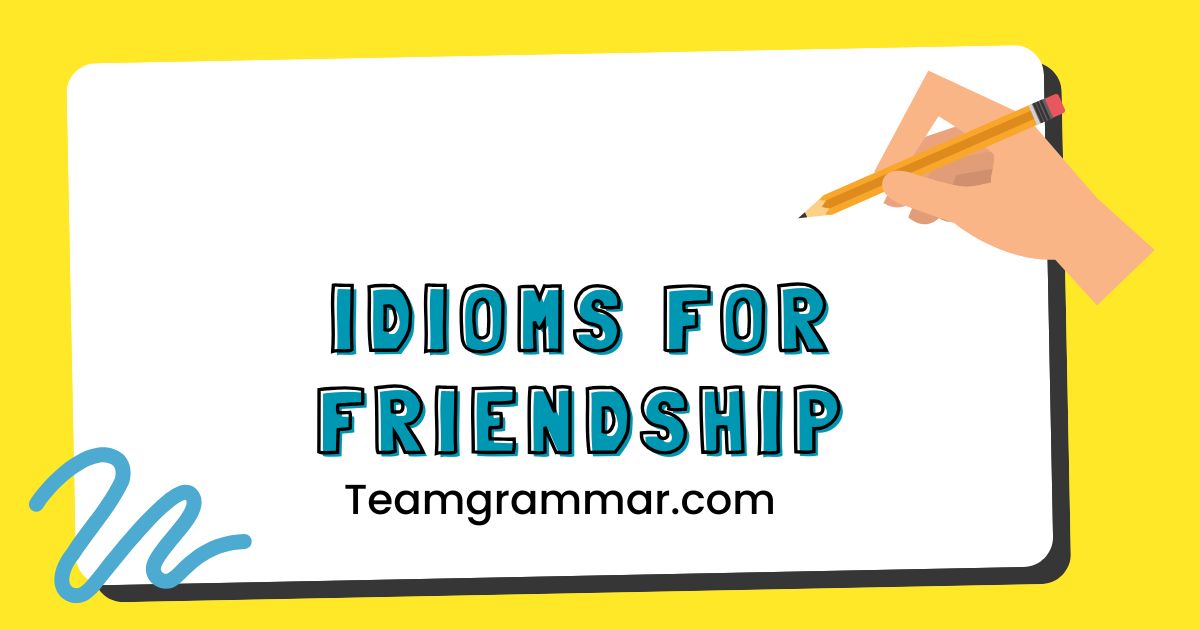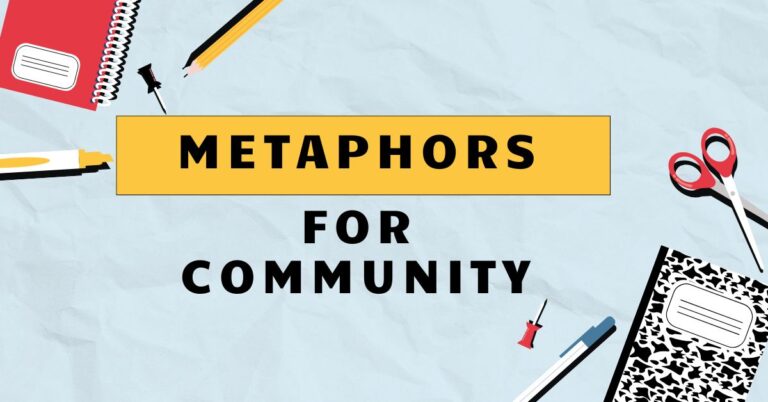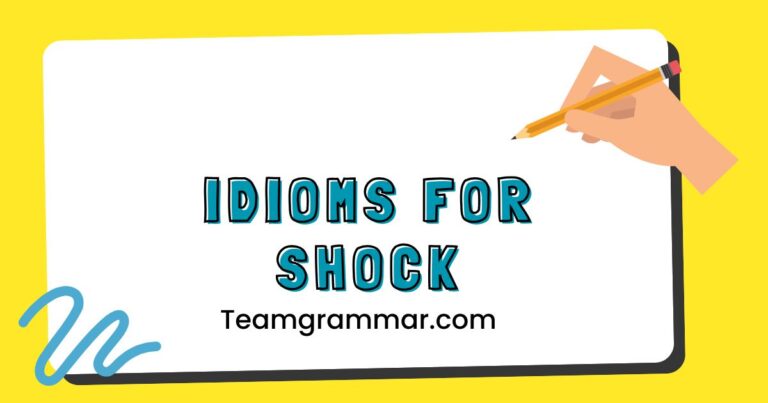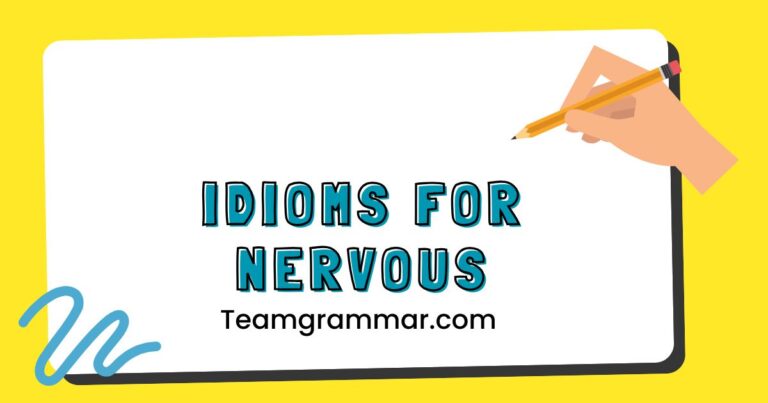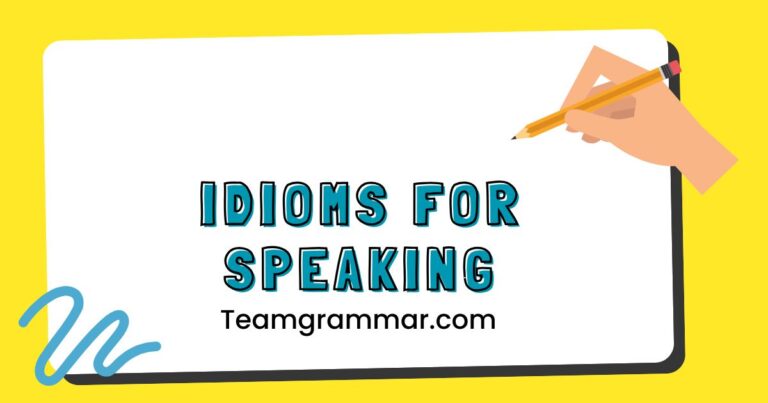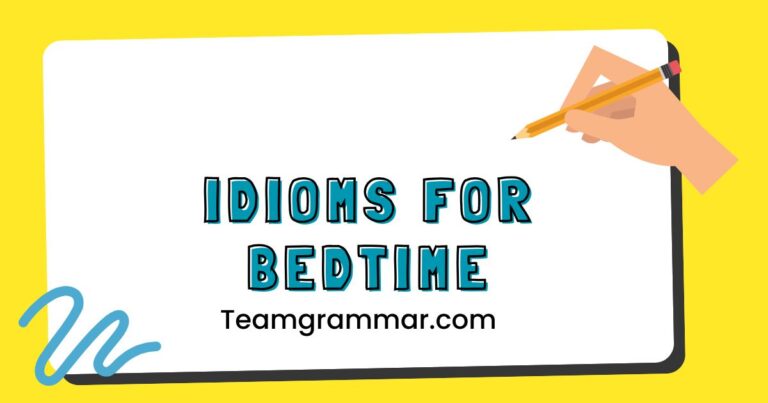33 Idioms for Friendship: Expressing Bonds in English
Friendship, a cornerstone of human experience, is often described using colorful and expressive language. English idioms provide a rich tapestry of phrases that capture the nuances of friendship, from unwavering loyalty to shared experiences.
Understanding these idioms not only enhances your comprehension of English but also allows you to express the depth and complexity of your relationships more effectively. This article explores a wide range of idioms related to friendship, offering definitions, examples, and practical exercises to help you master their use.
Whether you’re an English language learner or a native speaker looking to enrich your vocabulary, this guide will deepen your understanding and appreciation of the language of friendship.
Table of Contents
- Introduction
- What are Idioms for Friendship?
- Structural Breakdown of Friendship Idioms
- Types and Categories of Friendship Idioms
- Examples of Friendship Idioms
- Usage Rules for Friendship Idioms
- Common Mistakes with Friendship Idioms
- Practice Exercises
- Advanced Topics in Friendship Idioms
- Frequently Asked Questions
- Conclusion
What are Idioms for Friendship?
Idioms for friendship are fixed expressions or phrases whose meanings cannot be understood from the literal meanings of the individual words. These idioms are used to describe the qualities, dynamics, and experiences associated with friendships.
They add color, depth, and emotional resonance to conversations about friendship, making them a valuable tool for effective communication. Friendship idioms often reflect cultural values and shared understandings about what it means to be a good friend.
The function of friendship idioms is to convey complex ideas about relationships in a concise and evocative way. Instead of simply stating that two people are very close, you might say they are “thick as thieves,” instantly conveying a sense of camaraderie and shared secrets.
These idioms are commonly used in both formal and informal settings, including literature, movies, everyday conversations, and professional communications, depending on the specific idiom and context. Their prevalence highlights the importance of friendship in human culture and the desire to express these bonds in meaningful ways.
Structural Breakdown of Friendship Idioms
Friendship idioms, like all idioms, do not follow standard grammatical rules in terms of literal meaning. Their structure varies widely, incorporating different parts of speech and grammatical constructions.
Understanding the structural elements can help in recognizing and interpreting these idioms, even if their literal translations make no sense.
Common Structural Elements
- Similes: Many friendship idioms use similes, comparing friends to well-known pairs or concepts. For example, “like two peas in a pod” compares friends to identical peas, highlighting their similarity and closeness.
- Metaphors: Other idioms use metaphors to describe the qualities of friendship. “A shoulder to cry on” uses the metaphor of a supportive shoulder to represent a friend who offers comfort during difficult times.
- Phrasal Verbs: Some idioms incorporate phrasal verbs to describe actions related to friendship, such as “patch things up,” which means to resolve a conflict in a friendship.
- Proverbs: Certain friendship idioms are derived from proverbs, offering wisdom about the value and maintenance of friendships. An example is “a friend in need is a friend indeed,” emphasizing the importance of support during hardship.
The grammatical patterns within friendship idioms can be quite diverse. Some idioms are complete sentences, while others are phrases that need to be incorporated into a larger sentence.
The key is to recognize that the meaning of the idiom is not derived from the individual words themselves but from the established usage and cultural understanding of the phrase as a whole.
Types and Categories of Friendship Idioms
Friendship idioms can be categorized based on the specific aspect of friendship they describe. This categorization helps in understanding the nuances of different idioms and choosing the most appropriate one for a particular context.
Here are some common categories:
1. Closeness and Intimacy
These idioms describe the degree of connection and emotional intimacy between friends.
- Examples: Thick as thieves, two peas in a pod, bosom buddies, joined at the hip, friends for life
2. Support and Loyalty
These idioms emphasize the supportive and loyal nature of true friendships.
- Examples: A shoulder to cry on, a friend in need is a friend indeed, stand by someone, have someone’s back, be there for someone
3. Shared Experiences
These idioms highlight the shared history, memories, and activities that bind friends together.
- Examples: Go way back, partners in crime, kindred spirits, birds of a feather, cut from the same cloth
4. Conflict and Reconciliation
These idioms address the challenges and resolutions that occur in friendships.
- Examples: Patch things up, bury the hatchet, clear the air, fall out with someone, be on the outs
5. Trust and Honesty
These idioms relate to the level of trust and honesty present in a friendship.
- Examples: Keep a secret, confide in someone, be upfront with someone, level with someone, wear your heart on your sleeve
Understanding these categories can help you appreciate the breadth of friendship idioms and use them more effectively in your own communication.
Examples of Friendship Idioms
This section provides a comprehensive list of friendship idioms, categorized for clarity and ease of understanding. Each idiom is accompanied by a definition and example sentence to illustrate its usage.
Table 1: Idioms Describing Closeness and Intimacy
The following table provides idioms that describe the closeness and intimacy between friends. These idioms highlight the deep connection and strong bond shared by individuals who are very close to each other.
| Idiom | Definition | Example Sentence |
|---|---|---|
| Thick as thieves | Very close and sharing secrets. | Sarah and Emily are thick as thieves; they tell each other everything. |
| Two peas in a pod | Very similar and always together. | John and his brother are two peas in a pod; they have the same interests and personalities. |
| Bosom buddies | Very close friends. | They’ve been bosom buddies since childhood. |
| Joined at the hip | Inseparable; always together. | Ever since they met, they’ve been joined at the hip. |
| Friends for life | Friends who will remain close forever. | We’ve been through so much together; we’re friends for life. |
| Like brothers/sisters | Having a close relationship like siblings. | Although they’re not related, they’re like brothers. |
| In each other’s pockets | Spending a lot of time together. | They’re always in each other’s pockets; it’s rare to see them apart. |
| Attached at the hip | Similar to “joined at the hip,” always together. | Since they started working together, they’ve been attached at the hip. |
| Close-knit | Having strong bonds and connections. | They have a very close-knit group of friends. |
| Old friends | Friends who have known each other for a long time. | We’re old friends; we’ve known each other since kindergarten. |
| Fast friends | Becoming friends quickly. | They became fast friends after meeting at the conference. |
| Besties | A shortened, informal term for “best friends.” | They’re total besties and do everything together. |
| Soulmates | People who understand each other deeply and share a strong connection. | They’re not just friends; they’re soulmates. |
| Partners in crime | Friends who enjoy mischievous or adventurous activities together. | They were partners in crime during their college years, always pulling pranks. |
| Kindred spirits | People who share similar interests, feelings, and attitudes. | We realized we were kindred spirits when we discovered our shared love for classic novels. |
| Birds of a feather | People who are similar in character, interests, or background. | “Birds of a feather flock together,” so it’s no surprise they became such good friends. |
| Cut from the same cloth | Having similar qualities or characteristics. | They’re cut from the same cloth, both being ambitious and hardworking. |
| A match made in heaven | A perfect pairing or combination. | Their friendship is like a match made in heaven, they complement each other so well. |
| Inseparable | Unable to be parted or separated. | Since they met, they’ve been inseparable, always doing everything together. |
| Attached at the hip | Always together; very close. | They’re attached at the hip and rarely spend time apart. |
| Like two peas in a pod | Very similar and always together. | The twins are like two peas in a pod, always dressing alike and sharing the same interests. |
| Kindred spirits | People who share similar interests, feelings, and attitudes. | They knew instantly that they were kindred spirits because of their shared passion for art. |
| Close buddies | Very good friends. | They have been close buddies since they met in college. |
| Thick as thieves | Very close and sharing secrets. | Those two are thick as thieves; they always seem to be plotting something together. |
Table 2: Idioms Describing Support and Loyalty
This table showcases idioms that highlight the supportive and loyal aspects of friendships. These idioms emphasize the importance of being there for each other during both good and bad times.
| Idiom | Definition | Example Sentence |
|---|---|---|
| A shoulder to cry on | Someone who offers comfort and support. | Whenever I’m feeling down, she’s always a shoulder to cry on. |
| A friend in need is a friend indeed | A true friend helps during difficult times. | He helped me move apartments; a friend in need is a friend indeed. |
| Stand by someone | To support someone during a difficult time. | I will always stand by my friends, no matter what. |
| Have someone’s back | To protect or support someone. | Don’t worry; I’ve got your back if anything goes wrong. |
| Be there for someone | To be available to support someone. | I’ll always be there for you, no matter what happens. |
| Through thick and thin | Through good times and bad times. | We’ve been friends through thick and thin. |
| Ride or die | Extremely loyal and supportive, no matter the circumstances. | She’s my ride or die; I know she’ll always be there for me. |
| In your corner | Supporting and defending someone. | I’m always in your corner, cheering you on. |
| A true friend | Someone who is loyal and supportive. | He’s a true friend; he’s always there when I need him. |
| Stick up for someone | To defend or support someone who is being criticized. | She always sticks up for her friends when others are talking about them. |
| Go to bat for someone | To support or defend someone. | He’s willing to go to bat for his friends, no matter what. |
| A rock | Someone who provides unwavering support and stability. | During the crisis, she was a rock for her family and friends. |
| Lean on someone | To rely on someone for support. | You can always lean on me when you need help. |
| Be someone’s anchor | To provide stability and support. | She was his anchor during that difficult time. |
| Carry the torch for someone | To continue supporting or promoting someone’s cause or memory. | After his passing, his friends vowed to carry the torch for his environmental initiatives. |
| Go the extra mile | To make an extra effort to help someone. | She always goes the extra mile for her friends, offering help without being asked. |
| Be a pillar of strength | To provide strong emotional support during difficult times. | He was a pillar of strength for his friends when they faced personal challenges. |
| Always have your back | To support and protect someone, no matter what. | “I’ll always have your back,” he reassured his friend. |
| Come rain or shine | To be there for someone through good times and bad times. | We’ve been friends come rain or shine, supporting each other through everything. |
| A shoulder to lean on | Someone who offers support and comfort during difficult times. | Whenever she felt overwhelmed, she knew she could find a shoulder to lean on in her best friend. |
| In it together | Sharing a common goal or experience and supporting each other. | They were in it together, working towards the same promotion and encouraging each other along the way. |
| Be a lifeline | To provide essential support or assistance in a difficult situation. | Her friend was a lifeline when she went through a tough breakup, offering constant support and distraction. |
| Offer a helping hand | To provide assistance or support to someone in need. | He always offers a helping hand to his friends whenever they’re struggling with something. |
Table 3: Idioms Describing Shared Experiences
The following table lists idioms that describe shared experiences between friends. These idioms highlight the common history, memories, and activities that bring friends closer together.
| Idiom | Definition | Example Sentence |
|---|---|---|
| Go way back | To have known someone for a long time. | We go way back; we’ve been friends since elementary school. |
| Partners in crime | Friends who enjoy mischievous or adventurous activities together. | They were partners in crime during their college years. |
| Kindred spirits | People who share similar interests, feelings, and attitudes. | We realized we were kindred spirits when we discovered our shared love for hiking. |
| Birds of a feather | People who are similar in character, interests, or background. | “Birds of a feather flock together,” so it’s no surprise they became such good friends. |
| Cut from the same cloth | Having similar qualities or characteristics. | They’re cut from the same cloth, both being adventurous and outgoing. |
| Share a bond | To have a strong connection or shared experience. | They share a bond through their shared love of music. |
| Have a history | To have a shared past or experiences. | They have a history together, having worked on several projects as a team. |
| Walk down memory lane | To reminisce about past experiences and memories. | We spent the evening walking down memory lane, looking at old photos. |
| Relive old times | To remember and enjoy past experiences again. | Whenever they meet, they love to relive old times. |
| Through thick and thin | Experiencing both good times and bad times together. | They’ve been through a lot through thick and thin, which has strengthened their friendship. |
| Share common ground | To have similar interests or beliefs. | They share common ground in their passion for environmental conservation. |
| Share a connection | To have a meaningful bond or relationship. | They share a connection that goes beyond just being friends; they’re like family. |
| Share a laugh | To enjoy humorous moments together. | They always share a laugh whenever they’re together, making even mundane tasks enjoyable. |
| Share secrets | To confide personal information in each other. | They share secrets that they wouldn’t tell anyone else. |
| Have each other’s back | To support and defend each other. | They always have each other’s back, no matter what. |
| Been there, done that | Having shared similar experiences. | “We’ve been there, done that,” they said, reminiscing about their backpacking trip. |
| Share a journey | To experience life together. | They share a journey filled with ups and downs, making their bond even stronger. |
| Have shared memories | To have common recollections of past events. | They have shared memories that make their friendship special. |
| Share the same wavelength | To have similar thoughts and feelings. | They always seem to be on the same wavelength, understanding each other without needing to speak. |
| Share the same sense of humor | To find the same things funny. | They share the same sense of humor, which makes their time together enjoyable. |
| Made memories together | To create shared experiences that are fondly remembered. | Over the years, they’ve made countless memories together. |
| Share a life | To live life alongside each other, experiencing various events together. | They’ve shared a life, growing old together, celebrating milestones, and supporting each other. |
| Have a common history | To share a past and experiences that shape their relationship. | They have a common history that binds them together, creating a friendship that lasts. |
Table 4: Idioms Describing Conflict and Reconciliation
This table lists idioms that describe conflict and reconciliation in friendships. These idioms address the challenges and resolutions that occur in friendships.
| Idiom | Definition | Example Sentence |
|---|---|---|
| Patch things up | To resolve a conflict and restore a friendship. | After the argument, they decided to patch things up. |
| Bury the hatchet | To make peace after a conflict. | It’s time to bury the hatchet and move on. |
| Clear the air | To discuss and resolve misunderstandings or tensions. | They needed to clear the air after the misunderstanding. |
| Fall out with someone | To have a disagreement and stop being friends. | They fell out with each other over a business deal. |
| Be on the outs | To be in a state of disagreement or estrangement. | They’ve been on the outs since their argument last month. |
| Kiss and make up | To reconcile after an argument. | They always kiss and make up after a fight. |
| Make amends | To do something to correct a mistake or wrongdoing. | He tried to make amends for his hurtful words. |
| Get over it | To move past a disagreement or offense. | It’s time to get over it and forgive each other. |
| Let bygones be bygones | To forget past disagreements and move forward. | We should let bygones be bygones and start fresh. |
| Turn the page | To start a new chapter after a conflict or difficult time. | It’s time to turn the page and focus on the future. |
| Work things out | To resolve problems and disagreements. | They sat down to work things out. |
| Bridge the gap | To overcome differences and restore understanding. | They tried to bridge the gap between their conflicting views. |
| Smooth things over | To resolve conflicts and restore harmony. | They attempted to smooth things over after the misunderstanding. |
| Call a truce | To agree to temporarily stop fighting or arguing. | They decided to call a truce during the holidays. |
| Hold a grudge | To maintain resentment over a past offense. | He refused to hold a grudge and forgave his friend. |
| Clear the air | To address and resolve misunderstandings or tensions. | They needed to clear the air after the miscommunication. |
| Make peace with | To come to terms with a disagreement or past event. | They finally made peace with their past differences. |
| Bury the hatchet | To end a conflict and reconcile differences. | They decided to bury the hatchet and move forward. |
| Put differences aside | To set aside disagreements for the sake of a relationship. | They agreed to put their differences aside and work together. |
| Forgive and forget | To pardon someone and not dwell on past offenses. | They decided to forgive and forget and rebuild their friendship. |
| Iron out differences | To resolve conflicts through discussion and compromise. | They needed to iron out their differences before making any decisions. |
| Mend fences | To repair damaged relationships. | He tried to mend fences with his friend after their argument. |
Usage Rules for Friendship Idioms
Using friendship idioms correctly involves understanding their specific meanings and contexts. Here are some key rules to follow:
- Context Matters: Always consider the context of the conversation when using an idiom. Some idioms are more appropriate for informal settings, while others can be used in more formal situations.
- Audience Awareness: Be mindful of your audience. If you’re speaking to someone who is not a native English speaker, it’s best to use idioms sparingly or explain their meanings.
- Correct Usage: Ensure you use the idiom correctly. Misusing an idiom can lead to confusion or miscommunication. If you’re unsure, it’s best to look up the idiom’s definition and example sentences.
- Avoid Overuse: While idioms can add color to your language, overuse can make your speech sound unnatural or cliché. Use them judiciously.
- Cultural Sensitivity: Be aware that some idioms may have cultural connotations or be more common in certain regions. Avoid using idioms that could be offensive or misunderstood.
By following these guidelines, you can effectively incorporate friendship idioms into your vocabulary and enhance your communication skills.
Common Mistakes with Friendship Idioms
Many learners make common mistakes when using friendship idioms. Here are some examples of these errors and how to correct them:
Table 5: Common Mistakes with Friendship Idioms
| Incorrect | Correct | Explanation |
|---|---|---|
| They are thick as water. | They are thick as thieves. | “Thick as thieves” is the correct idiom to describe close friends who share secrets. |
| He gave me a leg to cry on. | He gave me a shoulder to cry on. | “A shoulder to cry on” is the correct idiom for someone who offers comfort and support. |
| We go far back. | We go way back. | “Go way back” is the correct idiom to express having known someone for a long time. |
| They fell out with each other in a business deal. | They fell out with each other over a business deal. | “Fell out with each other over” is the correct form, specifying the cause of the falling out. |
| Let waters be waters. | Let bygones be bygones. | “Let bygones be bygones” is the correct idiom to forget past disagreements. |
| We have water under the bridge. | That’s water under the bridge. | “That’s water under the bridge” is the correct idiom to suggest that something is in the past and no longer important. |
| She is my ride and die friend. | She is my ride or die. | “Ride or die” is the correct phrase, meaning extremely loyal and supportive. |
| They are like two apples in a pod. | They are like two peas in a pod. | “Like two peas in a pod” is the correct idiom for being very similar and always together. |
By being aware of these common mistakes, you can avoid errors and use friendship idioms more accurately.
Practice Exercises
Test your understanding of friendship idioms with the following exercises. Choose the correct idiom to complete each sentence.
Exercise 1: Fill in the Blanks
Choose the correct idiom from the list below to complete each sentence.
Idiom List: Thick as thieves, a shoulder to cry on, go way back, bury the hatchet, two peas in a pod, ride or die, partners in crime, a friend in need is a friend indeed, have my back, clear the air
| Question | Answer |
|---|---|
| 1. Sarah and Emily are ________; they tell each other everything. | Thick as thieves |
| 2. Whenever I’m feeling down, she’s always ________. | a shoulder to cry on |
| 3. We ________; we’ve been friends since elementary school. | go way back |
| 4. It’s time to ________ and move on from the argument. | bury the hatchet |
| 5. John and his brother are ________; they have the same interests and personalities. | two peas in a pod |
| 6. She’s my ________; I know she’ll always be there for me. | ride or die |
| 7. They were ________ during their college years, always pulling pranks. | partners in crime |
| 8. He helped me move apartments; ________. | a friend in need is a friend indeed |
| 9. Don’t worry; I ________ if anything goes wrong. | have my back |
| 10. They needed to ________ after the misunderstanding to resolve the tension. | clear the air |
Exercise 2: Multiple Choice
Choose the best idiom to complete each sentence.
| Question | Options | Answer |
|---|---|---|
| 1. They are so close; they are like ________. | a) two apples in a tree b) two peas in a pod c) two birds in a cage | b) two peas in a pod |
| 2. He is always there for me; he is ________. | a) a leg to stand on b) a hand to hold c) a shoulder to cry on | c) a shoulder to cry on |
| 3. We have known each other for a long time; we ________. | a) go far back b) go way back c) go near back | b) go way back |
| 4. They had a disagreement, but they decided to ________. | a) bury the axe b) bury the hammer c) bury the hatchet | c) bury the hatchet |
| 5. They are very similar and get along well; they are ________. | a) kindred ghosts b) kindred spirits c) kindred zombies | b) kindred spirits |
| 6. She is extremely loyal; she is my ________. | a) ride or run b) ride or walk c) ride or die | c) ride or die |
| 7. They enjoy doing mischievous things together; they are ________. | a) partners in love b) partners in crime c) partners in peace | b) partners in crime |
| 8. He helped me when I needed it most; ________. | a) a friend indeed is a friend in need b) a friend in need is a friend indeed c) a need in friend is a friend indeed | b) a friend in need is a friend indeed |
| 9. I will always support you; I ________. | a) have your front b) have your side c) have your back | c) have your back |
| 10. They needed to resolve their issues; they needed to ________. | a) clear the sky b) clear the air c) clear the clouds | b) clear the air |
Advanced Topics in Friendship Idioms
For advanced learners, exploring the nuances and origins of friendship idioms can provide a deeper understanding of the English language and culture. Here are some advanced topics to consider:
- Etymology: Research the origins of specific friendship idioms. Understanding their historical context can shed light on their meanings and usage.
- Regional Variations: Explore how friendship idioms vary across different English-speaking regions. Some idioms may be more common in certain countries or dialects.
- Literary Analysis: Analyze how authors use friendship idioms in literature to convey character relationships and themes.
- Cultural Significance: Investigate the cultural values and beliefs reflected in friendship idioms. How do these idioms reflect societal attitudes towards friendship?
- Idiom Creation: Consider how new idioms are created and how they evolve over time. Can you create your own friendship idiom?
By delving into these advanced topics, you can gain a more sophisticated understanding of friendship idioms and their role in the English language.
Frequently Asked Questions
Conclusion
Friendship idioms offer a fascinating glimpse into the cultural and emotional aspects of human relationships. By understanding and using these idioms, you can express the depth and complexity of your friendships more effectively.
This guide has provided a comprehensive overview of friendship idioms, including their definitions, usage rules, common mistakes, and practice exercises. Whether you’re an English language learner or a native speaker, mastering these idioms will enhance your communication skills and deepen your appreciation of the English language.
Keep practicing and exploring new idioms to enrich your vocabulary and express your thoughts and feelings with greater precision and color.

